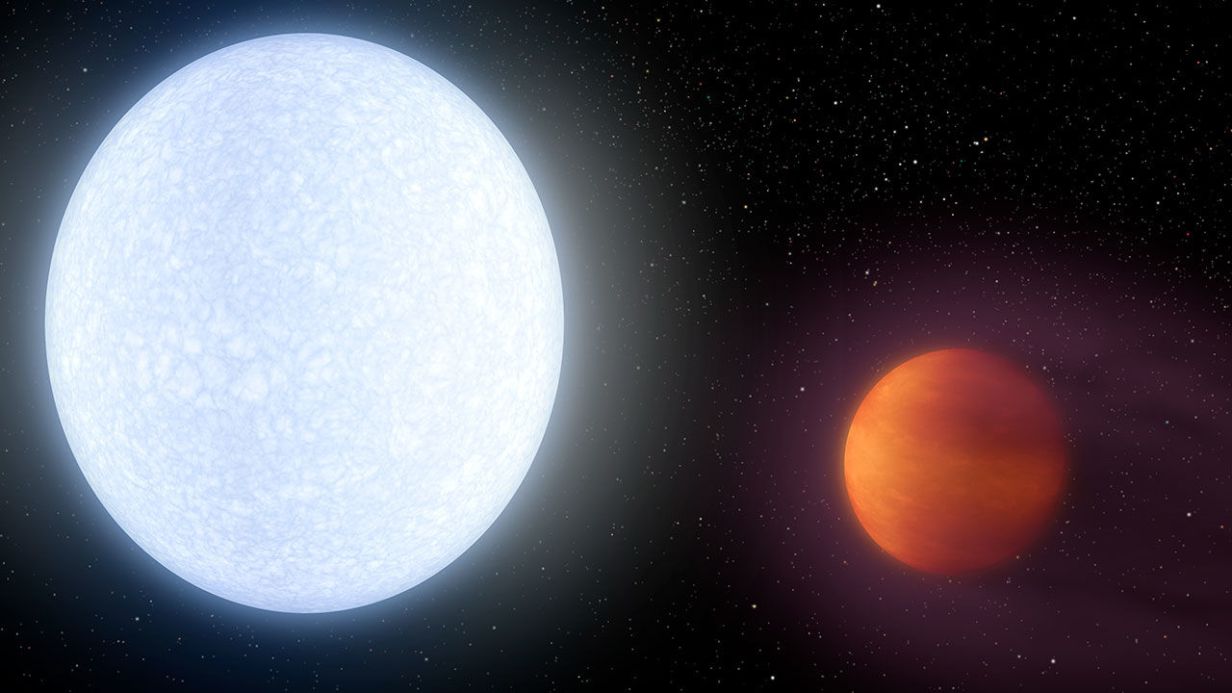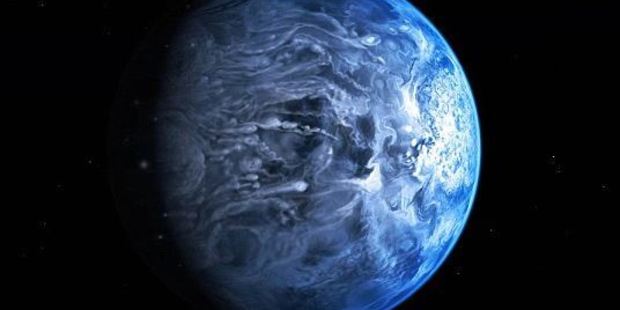
Scientists have found “KELT-9b” the hottest planet in the universe – and it’s hotter than most STARS.
The hottest known exoplanet, which is said to be hotter in places than most known stars, has been spotted 650 light-years from Earth.
With a day-side temperature peaking at 4,600 Kelvin (around 4,327 degrees Celsius), the newly-discovered exoplanet, called KELT-9b, is hotter than most stars and only 1,200 Kelvin (930°C) cooler than our own Sun. The previous record holder, Wasp-12b, was found in 2008 and reaches temperatures of a relatively cool 2,500 K (2,200°C).
The temperature on the newly-discovered burning world would cause molecules to break apart and any trace of an atmosphere to evaporate. Although this means there is little to no chance of finding alien life on the exoplanet, the unusual discovery will help astronomers understand how stars and planets form, plus how they are destroyed.
“It’s a planet by any of the typical definitions based on mass, but its atmosphere is almost certainly unlike any other planet we’ve ever seen just because of the temperature of its day side,” said lead author Scott Gaudi, professor of astronomy at The Ohio State University.
KELT-9b is tidally locked to its star KELT-9, like the moon is to Earth. This means the day side of the planet is constantly hit with high-energy radiation from the star, which generates the intense heat. It orbits extremely close to this host star – a rapidly rotating A-type star, about 2.5 times more massive and almost twice as hot as our Sun – and if the star begins to expand it will engulf the planet.
“KELT-9 radiates so much ultraviolet radiation that it may completely evaporate the planet. Or, if gas giant planets like KELT-9b possess solid rocky cores as some theories suggest, the planet may be boiled down to a barren rock, like Mercury,” said co-author Keivan Stassun, professor of physics and astronomy at Vanderbilt.
“KELT-9 will swell to become a red giant star in about a billion years,” said Stassun. “The long-term prospects for life, or real estate for that matter, on KELT-9b are not looking good.”
While it is almost impossible life could be found on the planet, the astronomers are still excited about what it can teach us.
“The astronomical community is clearly focused on finding Earth-like planets around small, cooler stars like our Sun,” said Gaudi. “They are easy targets and there’s a lot that can be learned about potentially habitable planets orbiting very low-mass stars in general.
“On the other hand, because KELT-9b’s host star is bigger and hotter than the Sun, it complements those efforts and provides a kind of touchstone for understanding how planetary systems form around hot, massive stars.”
“As we seek to develop a complete picture of the variety of other worlds out there, it’s important to know not only how planets form and evolve, but also when and under what conditions they are destroyed,” said Stassun.













